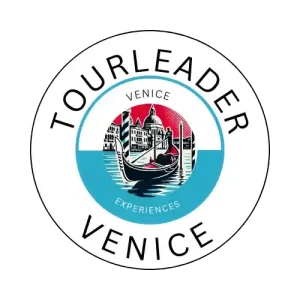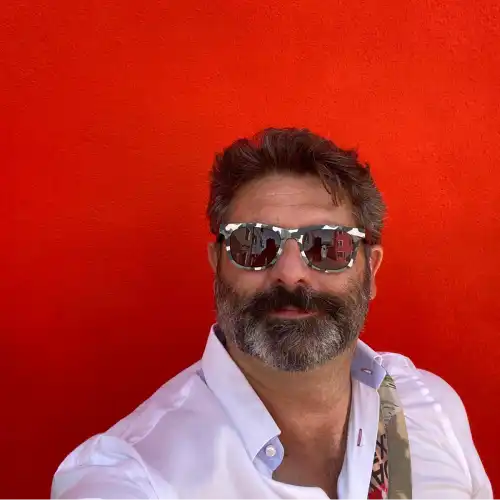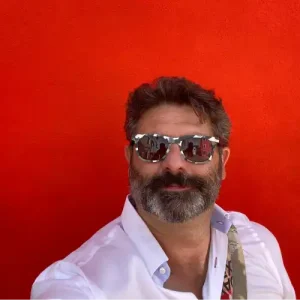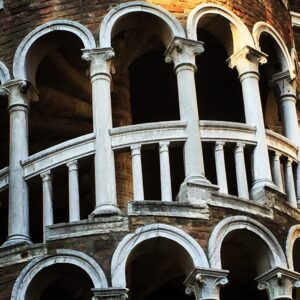Giudecca — Venice’s Island of Reinvention
When travelers picture Venice, they imagine gondolas gliding under the Rialto Bridge, the crowds of St. Mark’s Square, and palaces shimmering on the Grand Canal. Yet just across the water lies an island that tells a different story — quieter, deeper, and filled with the echoes of Venice’s ability to reinvent itself: Giudecca.
Stretching like a graceful crescent along the city’s southern edge, Giudecca is both mirror and counterpoint to Venice. From the monumental Mulino Stucky flour mill, now a five-star Hilton, to Mariano Fortuny’s legendary textile workshops, from Friedensreich Hundertwasser’s burst of architectural color to the reimagined Junghans watch factory, the island embodies everything that makes Venice timeless — its talent for transforming decay into beauty.
Most tourists never set foot here. But those who do discover an island where locals still hang laundry in courtyards, students sketch Palladio’s domes, and the skyline of San Marco glows across the Giudecca Canal. This is Venice without filters — a place where history, art, and daily life coexist naturally.
🌊 1. First Impressions — The Crescent of Venice
Giudecca is the largest of Venice’s central islands (excluding the Lido). Its shape follows the curve of the lagoon like a smile — a stretch of calm facing the bustling heart of the city. Because it sits just one vaporetto stop from Zattere, Giudecca offers some of the most spectacular panoramic views in the entire lagoon: the domes of Santa Maria della Salute, the bell tower of San Giorgio Maggiore, and the marble façade of the Doge’s Palace shimmering across the water.
Historically, this was a place of gardens, monasteries, and noble retreats. Later it became Venice’s industrial powerhouse. Today, it’s a patchwork of contrasts: convents beside factories, art galleries beside shipyards, five-star suites beside vegetable plots. Every bridge and alley whispers a new chapter in Venice’s story of survival.
🏛️ 2. Giudecca Through the Ages
The Origins
The name “Giudecca” (or “Zudeca”) has uncertain roots — perhaps from Giudicati (“judged ones”), perhaps from “Jews,” though there is no evidence of a Jewish settlement here. What is certain is that by the Middle Ages it had become a prestigious residential area, dotted with villas and orchards belonging to Venetian nobles seeking space and sea breezes away from the dense center.
The Renaissance: Palladio’s Masterpiece
Giudecca gained eternal fame in the 16th century when Andrea Palladio designed the Church of the Most Holy Redeemer (Chiesa del Redentore). Built between 1577 and 1592 as a votive offering after a devastating plague, the Redentore is one of Venice’s most beloved landmarks. Each July, the city celebrates the Festa del Redentore, building a floating bridge of boats to connect Giudecca with the rest of Venice for a night of fireworks, faith, and friendship. Standing on Giudecca’s promenade that evening is one of the lagoon’s most unforgettable experiences.
The Industrial Age
By the 19th century, as Venice struggled to adapt to modernity, Giudecca’s wide canal frontage attracted shipyards, mills, and factories. The island’s green gardens gave way to red-brick warehouses, and its aristocratic villas were replaced by workers’ housing. The most dramatic symbol of this transformation was the Mulino Stucky — a flour mill so large it changed the skyline of Venice forever.
Decline and Reinvention
When industry faded in the mid-20th century, Giudecca was left with vast empty spaces. Yet Venice never lets beauty go to waste. Artists, students, and dreamers moved into the abandoned factories, transforming them into studios and workshops. Austrian artist Hundertwasser built his eccentric housing complex here; the IUAV architecture faculty opened new spaces in the former Junghans factory; and the Fortuny textile tradition continued quietly in its lagoon sanctuary. Giudecca became a laboratory for Venice’s future — creative, resilient, and deeply human.
🌾 3. Mulino Stucky — From Flour to Five Stars
The Mulino Stucky dominates Giudecca’s skyline like a Gothic castle rising from the water. Built between 1895 and 1897 by Swiss entrepreneur Giovanni Stucky, the mill was designed by German architect Ernst Wullekopf. At its height, it employed more than 1,500 workers, grinding wheat imported from across the Adriatic and turning Giudecca into the beating heart of Venice’s industrial age.
Tragedy struck in 1910 when Giovanni Stucky was murdered by a disgruntled employee. The mill struggled on but finally closed in 1955, its machinery silenced, its red bricks crumbling into the lagoon. For half a century, the vast complex stood abandoned — a haunting monument to lost ambition.
The Rebirth
Then came a new chapter. After an immense restoration, the mill reopened in 2007 as the Hilton Molino Stucky Venice, a symbol of Venice’s ability to reinvent its past for the future. Today, it is one of the city’s premier hotels, its Skyline Rooftop Bar offering panoramic views across the lagoon to San Marco. What once fed Venetians now welcomes them — and travelers from around the world — in refined comfort. The Mulino Stucky remains proof that in Venice, even factories can become poetry.
Join Tour Leader Venice for a private lagoon tour that glides past the Mulino’s towers at sunset — a sight few forget.
🧵 4. Fortuny — The Magic of Textiles and Light
Few names in Venetian culture evoke as much reverence as Mariano Fortuny y Madrazo (1871 – 1949). Painter, inventor, photographer, set designer, and visionary, Fortuny turned fabric into fine art and light into sculpture. In 1919, he established his workshop on Giudecca inside a former convent, where he combined artistic intuition with scientific precision to produce his legendary hand-printed textiles.
The Workshop
Inside, silks and velvets gleam like jewels. Fortuny’s designs draw inspiration from Renaissance patterns, Islamic geometry, and the ripples of lagoon water. His famous Delphos gown — a pleated silk masterpiece inspired by ancient Greece — revolutionized women’s fashion. His stage lighting innovations reshaped the modern theater. To this day, Fortuny fabrics are printed by hand using secret techniques passed from generation to generation.
Visiting the workshop (by appointment only) is like entering a sanctum of Venetian artistry. Time slows; the scent of dye and fabric fills the air. Fortuny’s spirit lingers in every thread, proof that craftsmanship and imagination can outlast centuries. Tour Leader Venice offers curated textile experiences for travelers who want to explore this quieter, more tactile side of the city.
🎨 5. Hundertwasser House — A Colorful Contrast
Venice may be the city of Renaissance harmony, but Austrian artist-architect Friedensreich Hundertwasser saw it differently. In 1995, he completed a bold experiment on Giudecca — a social-housing complex that broke every Venetian rule. Instead of symmetry, he embraced asymmetry; instead of muted pastels, he splashed vivid reds, blues, and greens; instead of flat roofs, he planted trees.
To Hundertwasser, “the straight line is godless.” His Giudecca building curves and twists like a living organism, turning affordable housing into a statement of joy and human dignity. Locals were skeptical at first; now the Hundertwasser House is cherished as a symbol of creative freedom within Venice’s strict architectural fabric. It reminds visitors that the city’s beauty isn’t confined to the past — it continues to evolve in surprising ways.
⏱️ 6. Junghans — From German Watches to Venetian Design
Few would expect a German watch company to play a role in Venice’s story, yet Junghans did exactly that. In the early 20th century, the firm opened a factory on Giudecca, producing precision instruments and employing local workers. When production ended, the complex lay silent for decades — until Venice’s new generation of architects and artists transformed it once more.
The Junghans Area Today
Today, the old industrial spaces have been reimagined as contemporary housing, studios, and university facilities. The IUAV University of Architecture uses part of the site for workshops and exhibitions. During the Venice Biennale, the Junghans area becomes a creative hub, hosting installations that contrast beautifully with its raw brick walls and lagoon light.
Giudecca’s genius lies in this constant reinvention — turning the remnants of labor into laboratories of creativity.
🕍 7. The Redentore Church — Palladio’s Promise
No visit to Giudecca is complete without standing before the Church of the Redeemer, Palladio’s luminous masterpiece. Built after the plague of 1575-77, it symbolizes both survival and gratitude. Its geometric perfection — white marble façade, grand dome, and serene interior — epitomizes Renaissance harmony. Inside, works by Tintoretto and Bassano glow in the half-light.
But the real magic arrives every July during the Festa del Redentore. A floating bridge connects Giudecca to the main islands; locals light lanterns on boats and balconies; fireworks blaze above the lagoon. Standing on Giudecca’s waterfront that night, surrounded by Venetians celebrating life itself, you feel what Venice has always known — beauty is an act of faith.
🏡 8. Everyday Giudecca — The Island Today
Beyond its famous landmarks, Giudecca remains a living neighborhood. Elderly Venetians shop at the weekly market near Ponte Longo; children race bicycles along the quiet fondamenta; artists paint in converted warehouses facing San Giorgio Maggiore. Vegetable gardens thrive where convent orchards once grew. The scent of coffee drifts from small cafés like Altanella or Do Mori, where gondoliers swap stories.
Walk to the western tip, and you’ll find tiny shipyards restoring wooden boats. Stroll eastward, and you reach tranquil gardens and private residences hidden behind wrought-iron gates. Everywhere, the view of Venice across the canal feels dreamlike — the city reflected in the water like memory itself.
🍷 9. Why Giudecca Matters — Venice in Microcosm
Giudecca encapsulates the whole Venetian story: faith and plague, industry and art, decline and rebirth. It is both a working-class district and a landscape of masterpieces; a place where global influences — Swiss, German, Austrian, Spanish — merge seamlessly into the lagoon’s rhythm.
For travelers seeking authenticity, Giudecca offers the rarest luxury in Venice: space and silence. You can sip a glass of Prosecco while watching gondolas glide across the canal, or explore the hidden ateliers where artisans still weave, carve, and paint. The island’s mix of grandeur and intimacy captures the essence of Venice itself — resilient, creative, endlessly beautiful.
🚤 10. Explore Giudecca with Tour Leader Venice
Our private experiences reveal Giudecca’s most captivating contrasts:
- 🏛️ Guided walk through the Redentore Church and Palladio’s legacy.
- 🧵 Exclusive visit to Fortuny’s textile workshop or Tessitura Bevilacqua.
- 🎨 Art and architecture circuit including Hundertwasser House and Junghans area.
- 🍝 Lunch or aperitivo at local trattorie overlooking the lagoon.
- 🚤 Optional extension to a sunset bragozzo sailing or the nearby islands of Murano and Burano.
With Tour Leader Venice, you’ll explore at your own pace — no crowds, no rush, only authentic stories told by local experts who know every canal and courtyard. You’ll see how Venice continues to evolve — not as a museum, but as a living work of art.
🌅 11. Final Thoughts — The Island That Never Stops Changing
Giudecca may lie just a few minutes from San Marco, but it feels a world away. Its skyline blends bell towers and smokestacks, Palladio’s domes and modern rooftops. Its people embody Venice’s enduring spirit — pragmatic, imaginative, and quietly proud.
To walk along Giudecca’s waterfront at sunset is to witness the full panorama of Venetian history: the grandeur of the Republic, the hum of factories, the whisper of new beginnings. It is the island of reinvention — a bridge between what Venice was and what it dares to become.
❓ FAQs — Giudecca, Venice’s Island of Reinvention
Is Giudecca worth visiting?
Absolutely. Giudecca offers a quieter, more authentic side of Venice — a blend of Palladian architecture, industrial heritage, and local life. You can visit the Church of the Redentore, admire the converted Mulino Stucky, or wander along peaceful canals with breathtaking views of St. Mark’s skyline. It’s the perfect escape from Venice’s crowds while remaining just a few minutes away by vaporetto.
What can I see and do on Giudecca Island?
Giudecca is full of contrasts: visit Palladio’s Redentore Church, explore the Fortuny textile workshop, see Hundertwasser’s colorful housing project, or walk through the reimagined Junghans factory now used by architecture students. Enjoy local trattorie like Altanella, stroll through community gardens, or sip cocktails at the Skyline Rooftop Bar inside the restored Hilton Molino Stucky while watching the sunset over the lagoon.
Can I explore Giudecca with a private tour?
Yes. Tour Leader Venice offers tailor-made experiences revealing Giudecca’s art, architecture, and everyday charm — from private visits to Fortuny’s workshop to guided walks through Palladio’s legacy. You can even extend your itinerary with nearby islands or enjoy a Venice Sunset Tour on a Traditional Bragozzo Boat for a spectacular view of Giudecca’s skyline bathed in evening light.







